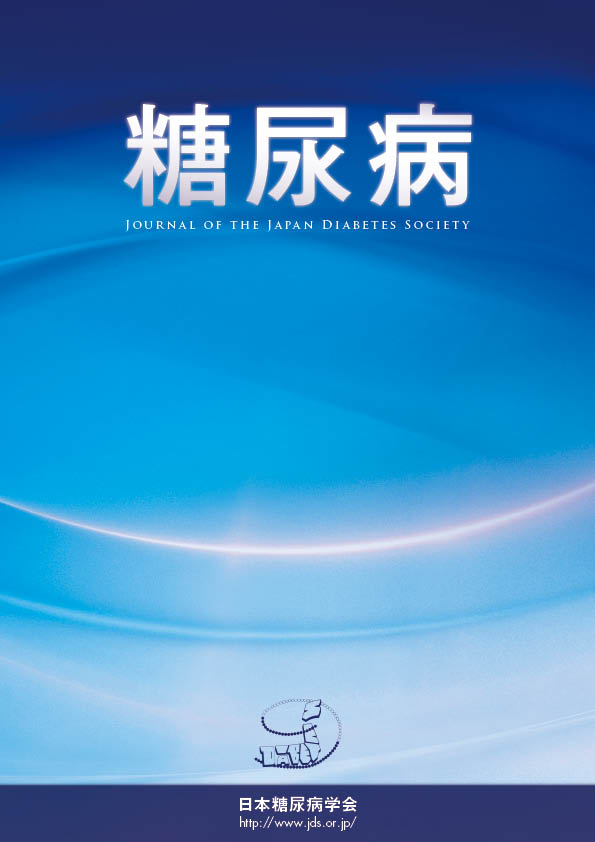
- |<
- <
- 1
- >
- >|
-
Ryotaro Bouchi, Tatsuya Kondo, Yasuharu Ohta, Atsushi Goto, Daisuke Ta ...2023 Volume 66 Issue 10 Pages 715-733
Published: October 30, 2023
Released on J-STAGE: October 30, 2023
JOURNAL RESTRICTED ACCESSDownload PDF (1644K)
-
Masuomi Tomita, Fumiya Harashima, Hiroko Hironou, Chikako Ishida2023 Volume 66 Issue 10 Pages 734-741
Published: October 30, 2023
Released on J-STAGE: October 30, 2023
JOURNAL RESTRICTED ACCESSObjective: This study aimed to examine the usefulness of health guidance by a diabetes team using intermittently scanned CGM (isCGM) and its profitability as a self-funded department. Background: Health insurance associations (HIAs) provide health guidance as a "lifestyle-related disease prevention program" to prevent the seriousness of lifestyle-related diseases. However, few HIAs provide health guidance using isCGM jointly with specialized diabetes facilities. We provided an outpatient education program using isCGM for approximately three months and an inpatient program including two nights and three days of hospitalization to individuals with insurance selected by each HIA. Results: One hundred thirty-four patients participated in the program, including: 109 patients with diabetes, 59 patients with hypertension, and 83 patients with dyslipidemia. The changes from baseline to after the program were as follows: body weight, 73.5±13.1 kg to 72.1±12.8 kg (p< 0.001); blood pressure, 128.6±17.8/83.3±14.7 mmHg to 122.9±15.4/77.8±11.8 mmHg (p< 0.001); HbA1c, 7.1±1.1 to 6.7±0.9 % (p< 0.001); LDL-C, increased 132.6±37.8 mg/dL to 127.2±38.9 mg/dL (p< 0.05). Over the three-year period, the revenue was 23,110,000 yen. Conclusion: The diabetes team's intervention using isCGM for patients with diabetes, hypertension, and dyslipidemia in health guidance was useful and is expected to contribute to hospital revenue as a self-funded department.
View full abstractDownload PDF (543K) -
Satoshi Tanaka, Yasuto Sato, Naoko Iwasaki2023 Volume 66 Issue 10 Pages 742-749
Published: October 30, 2023
Released on J-STAGE: October 30, 2023
JOURNAL RESTRICTED ACCESSThe efficacy of precision medicine in reducing glycated hemoglobin (HbA1c) levels and the costs of diabetes-related medication in patients with maturity-onset diabetes of the young (MODY) was investigated. The study included two patients with MODY1 and five patients with MODY3 who received their genetic diagnosis and thereafter continued their outpatient care at our university. The HbA1c levels and monthly costs before and 12 months after implementing precision medicine were analyzed. The results revealed that the average HbA1c levels significantly decreased from 7.37 %±1.10 % to 6.29 %±0.48 % (p<0.05), and the costs of medication significantly decreased from ¥20,153±6,665/month to ¥8,671±8,817/month (p<0.05). Initially, six of the seven patients were receiving insulin therapy, with three patients receiving four injections per day and the other three receiving three injections per day. After implementing precision medicine, five patients eventually discontinued insulin therapy, including four who switched to taking oral hypoglycemic agents alone. The implementation of precision medicine for patients with a definite diagnosis of MODY1 or MODY3 improved their glycemic control and contributed to reduced medical costs. Importantly, it also helped attenuate the stigma related to having diabetes mellitus. The high prevalence of hepatocellular adenoma-suspected tumors was also shown in patients with MODY3.
View full abstractDownload PDF (406K)
-
Reiko Hirasawa, Rie Nishitani, Keiko Ashidate, Mitsunobu Kawamura, Tet ...2023 Volume 66 Issue 10 Pages 750-757
Published: October 30, 2023
Released on J-STAGE: October 30, 2023
JOURNAL RESTRICTED ACCESSA 62-year-old man was admitted with consciousness disturbance one month after influenza virus infection. He had polyuria and polydipsia, which had persisted for 6 months, and had already been diagnosed with type 2 diabetes. The laboratory tests on admission revealed the following: blood glucose 905 mg/dL, HbA1c 13 %, Na 171 mEq/L and serum osmolality 415 mOsm/kgH2O. He was diagnosed with a hyperosmolar hyperglycemic state (HHS) and treated with a large volume of fluids and insulin infusion. However, even after his blood glucose level normalized, polyuria and hypernatremia persisted, and his urine osmolality was low. We diagnosed diabetes insipidus based on the findings of brain MRI (T1-weighted image), a hypertonic saline infusion test, and an arginine vasopressin test. We experienced a case involving a patient with type 2 diabetes who developed HHS after influenza infection and was diagnosed with complications of CDI during treatment. If polyuria persists after HHS treatment, CDI complications should also be suspected.
View full abstractDownload PDF (647K) -
Hiromi Fukutomi, Takuo Nomura, Makoto Igaki, Tetsuya Jibu, Akiyoshi Ok ...2023 Volume 66 Issue 10 Pages 758-764
Published: October 30, 2023
Released on J-STAGE: October 30, 2023
JOURNAL RESTRICTED ACCESSIn this ABAB-designed single case study, we examined the effects of a hybrid exercise program on the physical function in a 67-year-old patient with type 2 diabetes undergoing dialysis. Each intervention period was eight weeks. A dialysis outpatient who had a twice-weekly intervention frequency, performed pedal rotary motion of both lower limbs by ergometer exercise while lying in the supine position in the A period. The hybrid exercise, which used an electrical stimulation device on the back and front of both femoral regions at the same time as in period A, was performed during exercise practice in period B. As a result, the physical function improved more significantly in the first B period than in the first A period. We compared the second A period and the second B period, with the B period showing a slightly improved physical function compared with the A period. This hybrid exercise approach with electrical stimulation was an effective exercise program for an elderly dialysis patient with type 2 diabetes.
View full abstractDownload PDF (559K)
- |<
- <
- 1
- >
- >|